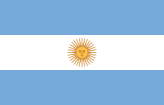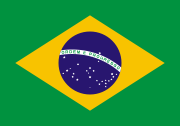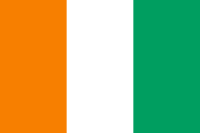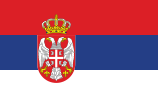Sevilla FC
| Full name | Sevilla Fútbol Club S.A.D. | |||
|---|---|---|---|---|
| Nickname(s) |
Sevillistas |
|||
| Founded | 14 October 1905 | |||
| Ground | Ramón Sánchez Pizjuán, Seville, Andalusia, Spain (Capacity: 45,500) |
|||
| Chairman | José María del Nido | |||
| Manager | Antonio Álvarez | |||
| League | La Liga | |||
| 2009–10 | La Liga, 4th | |||
|
||||
Sevilla Fútbol Club S.A.D. is a Spanish professional football club that plays in the top-flight Spanish La Liga championship. The club was established on 14 October 1905, making it the oldest football club from Seville, and the second oldest from Andalusia.
Contents |
History
The early years (1905–1948)
On 15 October 1905, the Civil Governor of Seville officially announced the creation of Sevilla FC. The first president of the club was D. José Luis Gallegos. In 1908, the team played its first official game, and the first official game in Spain, against Recreativo Huelva. In 1914, the team won its first Copa de Sevilla (Seville Cup). In 1935, Sevilla won the first of its Copa del Rey trophies, beating CE Sabadell FC 3–0. After the Spanish Civil War, Sevilla won the first Copa del Generalísimo (the second Spanish Cup win of the club), beating Racing de Ferrol by a score of 6–2.
The 1939–40 season also brought Sevilla very close to its first La Liga championship. The league had just returned to action after the Spanish Civil War, and Sevilla had some astounding games, beating Barcelona 11–1, Valencia 10–3 and Hércules 8–3. However, in the last game of the season, Sevilla could only manage to tie Hércules 3–3, thus giving the title to Atlético Aviación. In 1942–43, Sevilla took second place in the league again but fell to third the next year. After a transitional year in 1945–46, Sevilla won its first and only La Liga title, due mainly to the mercurial talent (striker) Oliver Ward, who managed to notch up an impressive 29 goal tally. In 1948, Sevilla captured its last Copa del Rey for 59 years, defeating Celta Vigo 4–1 at the Estadio Chamartín. Sevilla have beaten Real Madrid more times than any other team in La Liga, a record of 72 times.
The second half of the 20th century
Sevilla opened up its new Ramón Sánchez Pizjuán stadium in 1958 with a draw vs Real Jaen (3–3).
In the 60s, Sevilla started a decline to mid-table and after the 1967–68 season, Sevilla was sent down to the Spanish second division but returned to the top flight a year later.[1][2] After another brief drop and return in the early seventies, Sevilla remained firmly in the middle of the table until the 1996–97 season, when the club was sent down again.[3] Another return to La Liga was followed immediately by a last place finish in 1999–2000, in which Sevilla managed to scrape together only 28 points in the season.[4]
A new resurgence (2000–present)
Under new coach Joaquín Caparrós, Sevilla won the second division title in 2000–01.[5] New team president José María del Nido brought fiscal order to Sevilla, selling its homegrown superstar José Antonio Reyes to Arsenal in January 2004 for an initial fee of £10.5 million .[6] In that season (2003–04), not only did Sevilla reach the semi-finals of the Copa del Rey after more than 20 years (where it fell 2–1 to Real Madrid), but the team managed to qualify for Europe by placing sixth in the league and earning a ticket for the 2004–05 UEFA Cup.[7]
The 2005–06 UEFA Cup
Having finished 6th in the 2004–05 season, Sevilla secured a place in the first round of the 2005–06 UEFA Cup. After advancing through the first round and the group stage of competition, Sevilla beat Russian side Lokomotiv Moscow[8] to advance to the round of 16. On 9 March, Sevilla lost 1–0 to French club Lille OSC in the first leg of their home-and-away match,[9] but, on 15 March at home in Sevilla's 50th game in European competition, Sevilla won 2–0 to advance to the quarter-finals.[10] In these matches, which took place against Zenit St. Petersburg on 30 March, and 6 April 2006, Sevilla won 5–2 on aggregate and advanced to the semi-finals. [11] In the semis, Sevilla knocked out the strong German side Schalke 04 after 180 goalless minutes, with Antonio Puerta scoring the decisive goal in extra time of the return leg. That goal was called by the fans "el gol que nos cambió la vida" – "the goal that changed our lives", because thanks to it, Sevilla played their first European final.[12] On 10 May 2006, in the 2006 UEFA Cup Final, Sevilla broke a 58 year drought on trophies and became the first Andalusian team to win a European final. Sevilla defeated Middlesbrough 4–0 in Eindhoven to win the their first UEFA Cup with the largest margin of victory in a UEFA Cup final. One goal came from Luís Fabiano, two from Enzo Maresca, and one by Frédéric Kanouté.[13] At that time, Sevilla was the only European team which had played in the three major competitions (the European Cup, Cup Winner's Cup and UEFA Cup) and had never lost any game (out of 27) when playing on their home stadium until they lost to AZ on 14 December 2006.
2006 UEFA Super Cup
Having convincingly won the 2005–06 UEFA Cup, Sevilla booked a place in 2006 UEFA Super Cup, a one-off game which pits the UEFA Cup winners and the Champions League winners of the previous year against one another. At the Stade Louis II in Monaco on 25 August 2006, Sevilla beat the Champions League title-holders and league champions FC Barcelona 3–0, thanks an early goal by Brazilian Renato, a goal just before the half by Kanouté, and a penalty converted by Maresca in the second half stoppage time, to pick up its second European trophy (their second in just three months).[14]
The 2006–07 UEFA Cup
Sevilla finished 5th in La Liga in the 2005–06 season, and by virtue of this (and also by having won the competition the previous year), Sevilla qualified for the first round of the 2006–07 UEFA Cup. Sevilla won that matchup against the Greek side Atromitos and proceeded into the group stage of the competition, where the Andalusian side finished second in the group of five. In the knockout stage that followed this, Sevilla emerged victorious against Steaua Bucureşti, Shakhtar Donetsk, Tottenham Hotspur, and CA Osasuna to qualify for its second consecutive UEFA Cup final. Sevilla almost didn't survive the last 16 clash with Shaktar Donetsk, in which Sevilla's keeper Andrés Palop scored off a header in injury time to force extra-time against the Ukrainian side. Sevilla ended up winning the game, beating Shaktar 5–4 on aggregate.[15] On 16 May 2007, in the final held in Glasgow, Scotland, Sevilla defeated fellow Spanish side RCD Espanyol on penalties (regular time score 2–2),[16] for its second consecutive UEFA Cup title. Sevilla became only the second team to successfully defend the competition title, following Real Madrid, who achieved this feat in 1985 and 1986.
Antonio Puerta
On the first day of La Liga 2007–08 season, Sevilla were playing Getafe when Antonio Puerta began walking towards his goal area, fell to the ground, placed his hands on his knees, and collapsed onto his back. Ivica Dragutinović, Andrés Palop and Sevilla medical staff came to aid him to make sure of him not swallowing his tongue. He was revived and substituted. In the dressing room afterwards, he collapsed again. He was hospitalized and after three days in hospital (in which he was in a 'critical condition' and his health was 'unfavourable') reports came from the Spanish media that Puerta had died. These reports were later confirmed.
As a mark of respect for his passing, players from Sevilla and AC Milan printed "Puerta" on their shirts during the European Super Cup match on 31 August 2007. Furthermore, as Milan went on to win the match 3–1,[17] no jubilation was shown as a sign of respect for the grief sustained by Sevilla, as the win was dedicated to Puerta. Sevilla intended to retire the number "16" shirt as a sign of respect of Puerta but RFEF rules require La Liga clubs to use the numbers 1 to 25 for their regular squad. Instead, Puerta's good friend David Prieto was given the number 16 shirt. Sevilla also ordered one minute of silence before each match in their Liga season 2007–08. When Sevilla are playing at home the Sevilla fans show respect to Puerta by clapping throughout the 16th minute(Puerta's number 16)[18][19] The number is now worn by Diego Capel.
End of the Ramos era
On 26 October 2007, Juande Ramos, Sevilla manager between 2005–07, resigned from his duties in order to join the North London outfit Tottenham Hotspur, in a four-year deal with the English club worth €36 million (£25 million). Marcos Álvarez, the club's fitness coach, also resigned, and Manolo Jiménez, the head coach of the reserve team Sevilla Atlético, became the caretaker manager.[20]
Copa del Rey 2010
On May 19 2010, Sevilla FC claimed its fifth Copa del Rey title after a 2–0 victory against Atlético de Madrid at Camp Nou Stadium (Barcelona). Diego Capel and Jesús Navas scored the two goals. For entering the final, Sevilla FC eliminated Atletico Ciudad (9–3), FC Barcelona (2–2), Deportivo la Coruna (3–1), and Getafe CF (2–1). Sevilla FC was the first team defeating FC Barcelona in an official competition under the management of Josep Guardiola.
The Seville derby
In 1909, disagreement among some majority of the board of directors led to a split from which the Betis team was born; later in 1914 Real Betis was founded from the union of Betis FC and Sevilla Balompié.
On 8 October 1915, the first Sevilla-Betis derby took place, ending with a 4–3 Sevilla victory. The cross-town rivalry is considered one of the most violent and the most important derbies in Spain. And so, there have been many incidents throughout history.
On October 6, 2002, during a match of La liga at Estadio Ramón Sánchez Pizjuán, there were some violent altercations in which a security guard was assaulted by a Sevilla supporter with a crutch, whose was introduced by another colleague (who did not need those crutches for walking) In addition, the match was interrupted because of an attempted assault to Betis goalkeeper Toni Prats by a Sevilla supporter . [21] As of the 2006/07 season, 77 Sevilla derbies have been played in La Liga, of which Sevilla won 35, Real Betis won 26, and 16 ended in a draw.
During a quarterfinal match of the Copa del Rey on 28 February 2007, at Estadio Manuel Ruiz de Lopera, the game had to be suspended due to improper fan conduct on behalf of Real Betis. In the 60th minute a Real Betis supporter threw a projectile at then Sevilla manager Juande Ramos' head, subsequently knocking him out. Ramos' unconscious body had to be removed from the pitch on a stretcher to which the Sevilla FC footballers responded by abandoning the pitch in protest of this outburst of fan violence. As a result of the disgraceful behavior of their fans, Real Betis were condemned to their next 3 home matches being played in another venue by the Spanish Football Federation. Sevilla win the eliminatory and later won the Copa del Rey in Madrid. (Sevilla 1–0 Getafe), a bitter pill for Real Betis supporters to swallow during their centenary year as a club.
After 13 years of futility, on the 7 February 2009, Real Betis finally was able to beat Sevilla in their home stadium, Ramón Sánchez Pizjuán, by the narrowest of margins in a 1–2 victory for the visitors. However, despite this match, Sevilla FC would go on to finish 3rd in the table, qualifying for its second UEFA Champions League berth, while Real Betis would go on to finish 18th in the table, being relegated to Spain's second division.
Club information
Organisation
Sevilla is owned by its fans, with the stocks distributed across a few major holders and a large base of fans. The club supports one of the most renowned training academies in the country, which has produced many famous players.
Sevilla has also promoted innovations, such as a school of sport psychologists, who provide support for the younger as well as the professional players, and also more recently sports nutrition and medicine. Another recent success for Sevilla FC has been the establishment of its own radio station, "Sevilla FC Radio" (the first of its kind in Spain), their own local tv channel, "SFC TV", as well as other official media.
Stadium
Sevilla FC's stadium is named after its former president Ramón Sánchez Pizjuán and has a spectator capacity of 45,500. The stadium is located in the neighborhood of Nervión. Sevilla's performance in La Liga in the last few seasons has led to an increase in the number of season ticket holders, making it necessary to create a waiting list for tickets.
Kit
The team wears white, with red-striped sleeves and black socks, for home games and red, with white-striped sleeves,for away games. Their kit is provided by the sports clothing and equipment manufacturer Joma.
Biris
Some fans of the team (those who stand in of the north end of the stadium) call themselves Biris. They got their name from Alhaji Momodo Nije, who was nicknamed Biri-Biri. Alhaji, a Gambian player known for his intensity and mercurial nature, was so popular with the Sevilla fans that the most loyal fans named their cheering section (and thus, themselves) after him. They are also the oldest football fan group in Spain.
Affiliations
The clubs reserves Sevilla Atlético play in the Segunda División – Group 4. The club is also affiliated to Sevilla, a team playing in the Puerto Rico Soccer League.
Honours
Before the Spanish national competitions started, Sevilla also won 17 Andalusian Championships, and were crowned twice as Champions of Sevilla.
- La Liga (1) 1945–46
- Copa del Rey (5) 1934–35, 1938–39, 1947–48, 2006–07, 2009–10
- Spanish Super Cup (1) 2007
- UEFA Cup (2) 2005–06, 2006–07
- UEFA Super Cup (1) 2006
- Segunda División (4) 1928–1929, 1933–34, 1968–69, 2000–01
Current squad
Note: Flags indicate national team as has been defined under FIFA eligibility rules. Players may hold more than one non-FIFA nationality.
|
|
Out on loan
Note: Flags indicate national team as has been defined under FIFA eligibility rules. Players may hold more than one non-FIFA nationality.
|
|
Foreign players
 Lautaro Acosta
Lautaro Acosta
 Federico Fazio
Federico Fazio
 Luís Fabiano
Luís Fabiano
 Renato
Renato Arouna Koné
Arouna Koné
 Frédéric Kanouté
Frédéric Kanouté
.svg.png) Ivica Dragutinović
Ivica Dragutinović
Coaches
|
|
see also
Sevilla FC reserves
- Sevilla Atlético, will play the 2009/10 season in Segunda División B.
- Sevilla FC C, will play the 2009/10 in Tercera División.
References
- ↑ "Historia de la Liga – 1967/68". Sevilla FC Official Website (Spanish). http://www.sevillafc.es/historia/liga36.htm. Retrieved 24 August 2007.
- ↑ "Historia de la Liga – 1968/69". Sevilla FC Official Website (Spanish). http://www.sevillafc.es/historia/liga37.htm. Retrieved 24 August 2007.
- ↑ "Historia de la Liga – 1997/98". Sevilla FC Official Website (Spanish). http://www.sevillafc.es/historia/liga65.htm. Retrieved 24 August 2007.
- ↑ "Historia de la Liga – 1999/2000". Sevilla FC Official Website (Spanish). http://www.sevillafc.es/historia/liga68.htm. Retrieved 24 August 2007.
- ↑ "Historia de la Liga – 2000/01". Sevilla FC Official Website (Spanish). http://www.sevillafc.es/historia/liga69.htm. Retrieved 24 August 2007.
- ↑ Fletcher, Paul (20 July 2007). "Spanish trio hoping to sign Reyes". BBC Sport. http://news.bbc.co.uk/sport2/hi/football/teams/a/arsenal/6221686.stm. Retrieved 24 August 2007.
- ↑ "Historia de la Liga – 2003/04". Sevilla FC Official Website (Spanish). http://www.sevillafc.es/historia/liga72.htm. Retrieved 24 August 2007.
- ↑ "Sevilla glide past Lokomotiv". uefa.com. 23 February 2006. http://www.uefa.com/competitions/uefacup/history/season=2005/round=2210/match=82432/index.html. Retrieved 22 August 2007.
- ↑ "Blunder hands Lille the advantage". uefa.com. 9 March 2006. http://www.uefa.com/competitions/uefacup/history/season=2005/round=2211/match=83824/index.html. Retrieved 22 August 2007.
- ↑ "Sevilla leave Lille hopes in ruins". uefa.com. 15 March 2006. http://www.uefa.com/competitions/uefacup/history/season=2005/round=2211/match=83825/index.html. Retrieved 22 August 2007.
- ↑ "Kepa cameo seals Sevilla passage". uefa.com. 6 April 2006. http://www.uefa.com/competitions/uefacup/history/season=2005/round=2212/match=84041/index.html. Retrieved 22 August 2007.
- ↑ "Puerta sends Sevilla through". uefa.com. 27 April 2006. http://www.uefa.com/competitions/uefacup/history/season=2005/round=2213/match=84076/index.html. Retrieved 22 August 2007.
- ↑ "Sevilla run away with the trophy". uefa.com. 10 May 2006. http://www.uefa.com/competitions/uefacup/history/season=2005/round=2214/match=84102/index.html. Retrieved 22 August 2007.
- ↑ "Sevilla win big in Monaco". uefa.com. 25 August 2006. http://www.uefa.com/competitions/supercup/fixturesresults/round=2378/match=84343/report=rp.html. Retrieved 22 August 2007.
- ↑ "Sevilla saved by last gasp Palop". uefa.com. 15 March 2007. http://www.uefa.com/competitions/uefacup/fixturesresults/round=2367/match=300520/report=rp.html. Retrieved 22 August 2007.
- ↑ Espanyol – Sevilla : 3–5 Match report from ScoresPro.com
- ↑ AC Milan – Sevilla : 3–1 Match report from ScoresPro.com
- ↑ "Sevilla star dies after collapse". CNN. 28 August 2007. http://edition.cnn.com/2007/SPORT/football/08/28/spain.critical.reut/. Retrieved 30 August 2007.
- ↑ "Sevilla midfielder Puerta dies". Guardian Unlimited. 28 August 2007. http://football.guardian.co.uk/europeanfootball/story/0,,2157667,00.html?gusrc=rss&feed=networkfront. Retrieved 30 August 2007.
- ↑ "Ramos quits Sevilla to join Spurs". BBC. 27 October 2007. http://news.bbc.co.uk/sport2/hi/football/teams/t/tottenham_hotspur/7064928.stm. Retrieved 27 October 2007.
- ↑ "Cinco detenidos tras el Sevilla-Betis". El Mundo (Spanish). 07 October 2002. http://www.elmundo.es/elmundodeporte/2002/10/07/liga/1034016536.html. Retrieved 27 April 2010.
External links
- (Spanish) Official website
- (Spanish) Complete European record
- (Spanish) (English)Sevilla FC Team Profile, Stats and Analytics
|
|||||||||||||||||
|
||||||||
|
|||||
|
||||||||||||||||||||
|
|||||||||||||||||||||||